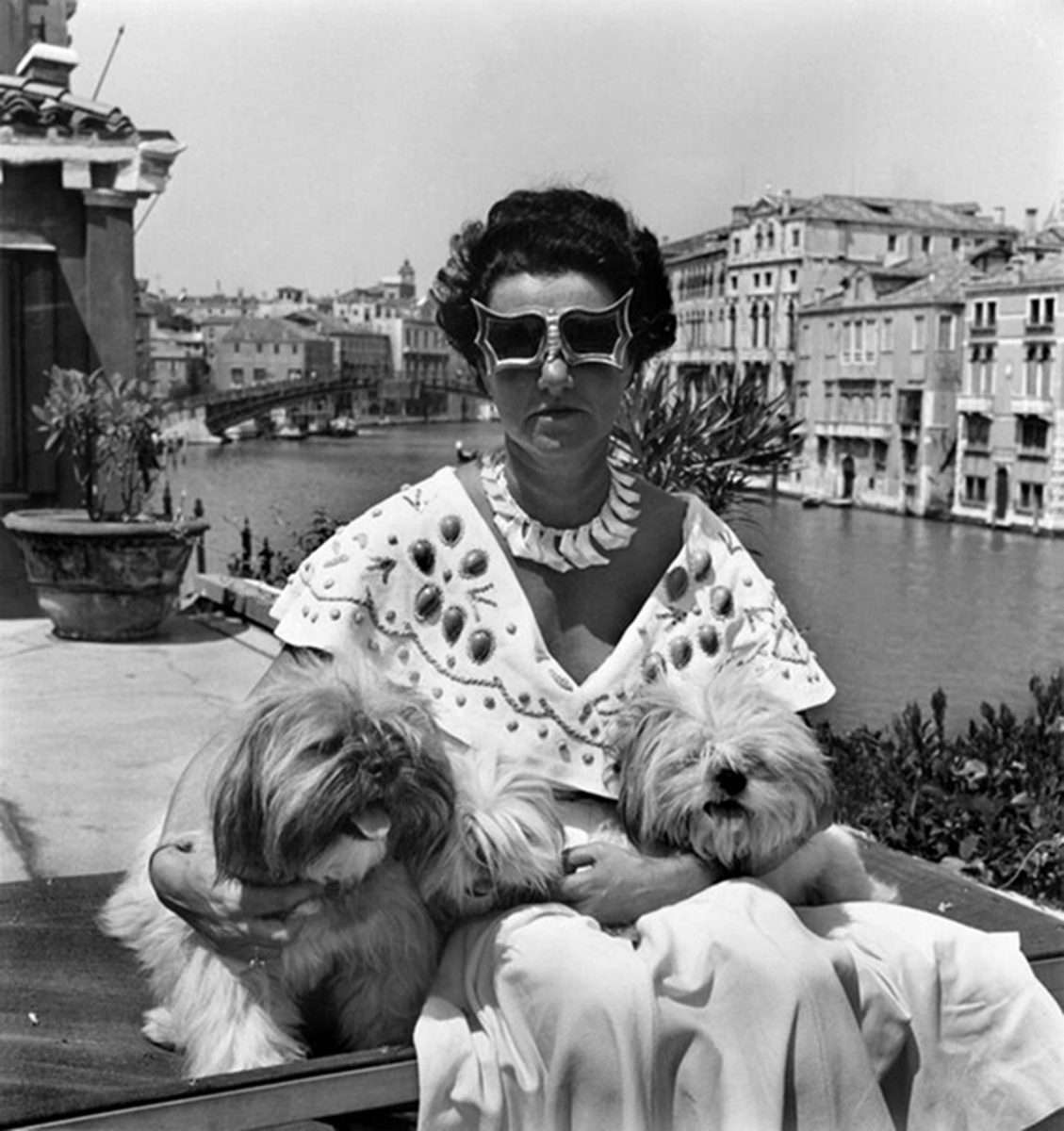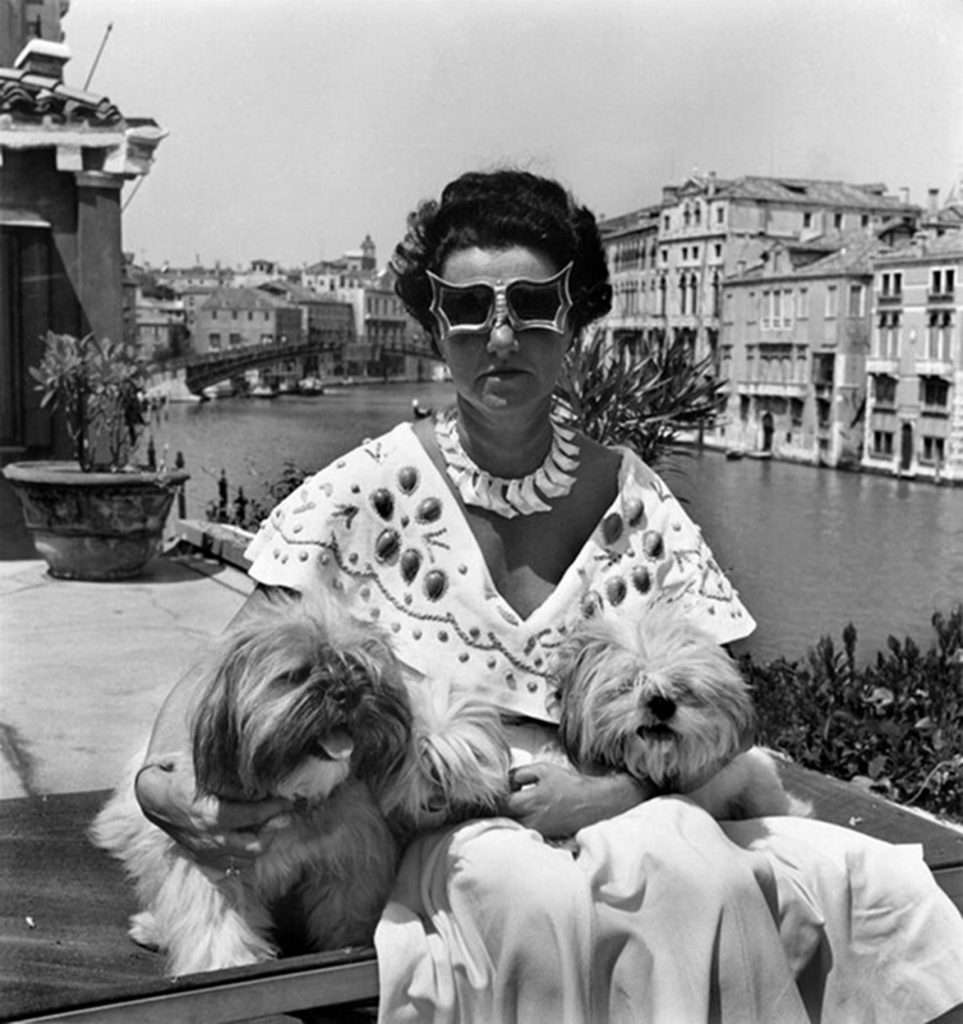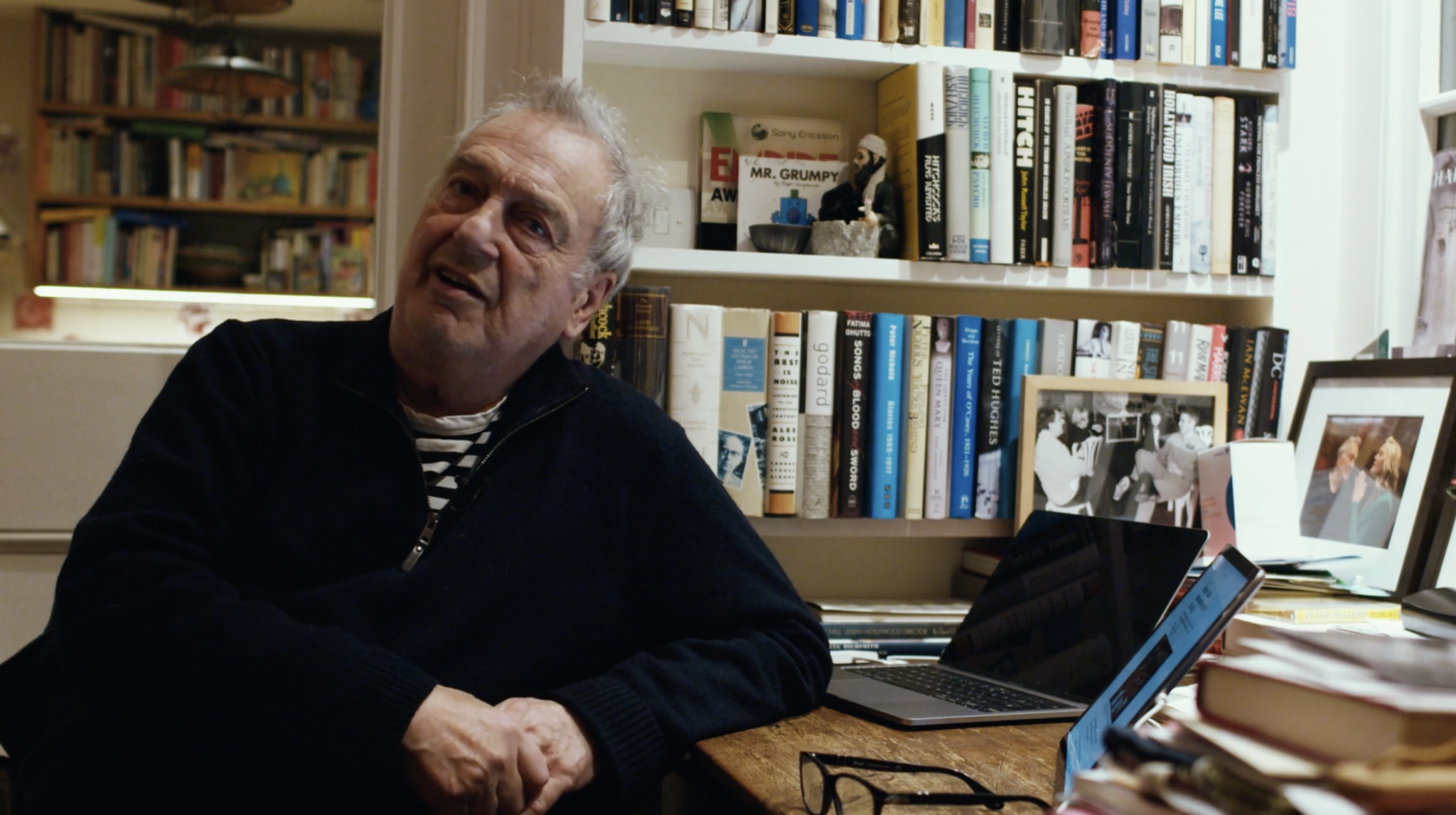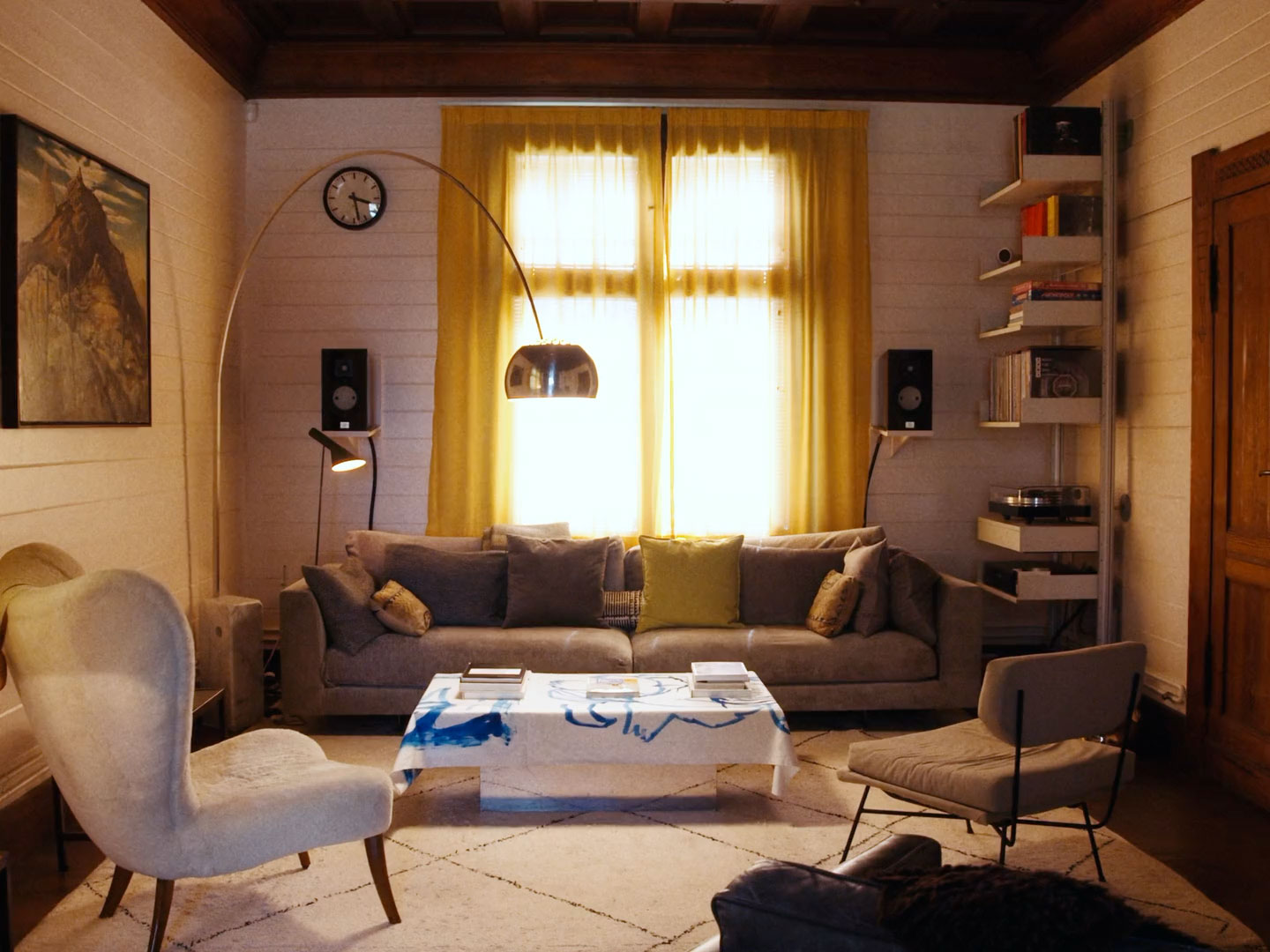
I visited the Peggy Guggenheim Collection off the Grand Canal in Venice when I was a child. Even then I felt the magic of her palazzo and her collection, but I never imagined that years later I would be given the chance to tell her story when I made Peggy Guggenheim: Art Addict. As I delved into her life, I was surprised—shocked even—and although I fell in and out of love with her, I was ultimately in complete awe of her. Peggy approached her life with reckless abandon. Regardless of the many personal tragedies she experienced, she was a trailblazer in a world which often did not afford women much, if any, significant influence. She was able to amass one of the most important modern art collections in the world, yet her legacy has been questioned and misunderstood for many years, and I sought to correct this misdemeanour.
As I made my way through the multiple biographies and articles that have been written about Peggy, none were more truthful or audacious than her autobiography; Out of This Century: Confessions of an Art Addict. It became the film’s guiding source, with its scandalous publication speaking to Peggy’s own boldness. Indeed, when the book was released in 1947, it caused such a stir that the Guggenheim family bought every copy in New York City, hoping to make it disappear. What is clear in her book is that she was a woman with a strong voice, and she was unafraid of showing it. Another asset to the film was my discovery of Jackie Bogard Weld’s Peggy: The Wayward Guggenheim. These lost audiotapes of Peggy’s last known interviews allowed Peggy to tell her story in her own words.
When dealing with a life as rich as Peggy’s, it was a challenge to decide what the focus of the film would be. We moved quickly through her tumultuous childhood but decided to highlight certain events that were essential to her story. Born in New York in 1898, Peggy was the daughter of two important immigrant Jewish families, the Seligmans and the Guggenheims. Both families had created a new life for themselves in America, and while Peggy led a privileged life it was still a miserable one. She had memories of a controlling mother and a philandering father: “My childhood was excessively unhappy…I have no pleasant memories of any kind. It seems to me now that it was one long protracted agony,” she said. Not feeling loved at a young age was a crippling experience, and resonated with her for the rest of her life. Her father’s death on the Titanic in 1912, when she was only 14-years-old, delivered yet another crucial blow to young Peggy.

In 1919, she finally came into her own money, which gave her her first taste of freedom, “I became a radical and finally emerged from the stifling atmosphere in which I had been raised.” Despite this newly gained financial independence, it wasn’t until Peggy moved to Paris in 1921 that her life began to take on a new meaning: “I must have gone to Paris expecting something to occur, but I never dreamed for an instant what was in store for me.” She was thrown into the world of the avant-garde when she met her husband, Lawrence Vail. Together they produced two children and, although the marriage did not survive, he helped place her in a world where she became increasingly comfortable and valuable.
To forge her own path, Peggy devoted herself entirely to art and the patronage of artists. When she entered the art world in the early 1920s, it was a different world than it is today. It was much smaller, with connections more intimate, and she was able to make an enormous difference. She played a pivotal role in the formative years of modern art and found her purpose by building her collection and supporting artists, “Little did I dream of the thousands of dollars I was about to sink into art.”
She was shrewd in her choice of her first adviser, Marcel Duchamp. She learned from one of the best, as Duchamp helped Peggy curate shows at her London art gallery, Guggenheim Jeune, beginning in 1938. The first show featured works by Jean Cocteau. The following exhibition was the first solo show of Vasily Kandinsky in the United Kingdom. Even in the very early days of her collection, she understood the significance of her patronage to these as-of-yet unknown and unproven artists, who needed and prospered under her support.
The Guggenheim Jeune was short-lived. However, Peggy had bigger plans. Before the war interfered, she had hoped to open the first modern art museum in London. Unfortunately, this was not to be. After moving back to Paris in 1939-1940, Peggy famously stated that she would “buy a painting a day,” and as she did this, she accumulated many of the masterpieces in her collection. She left Paris only when the Germans were approaching and eventually made her way to New York, meanwhile continuing to rescue “degenerate art” and artists from the Nazis along the way.
It was at her New York gallery, Art of this Century, where Peggy exhibited her Surrealist and Cubist treasures along with many unknown young Americans of the time, such as Robert Motherwell, Jackson Pollock, Mark Rothko, and Clyfford Still. She not only established herself as a link between European and American abstraction but created an environment where the young American artists were introduced to the idea of the subconscious, which was fundamental to the early formation of the ideology behind abstract expressionism. Art of the Century became the meeting place for both the young American and exiled artists. It was also the gallery where the first women-only art show took place, and where Jackson Pollock received the financial support from Peggy which would help him become the most influential artist of that time. Although her gallery had become ‘the place to be,’ Peggy still had the desire to build a museum. Her vision was not yet complete.
When Peggy closed the gallery in 1947, she knew exactly where she wanted to go: “Everything in Venice is not only beautiful but surprising.” It was at the Palazzo Venier Dei Leoni where Peggy became a true legend. Much to the surprise of the Venetians, the American divorcée filled her palazzo with lovers, Lhasa Apso dogs, and art that was neither understood nor appreciated. She was, however, triumphant on multiple levels. Not only had Peggy become a well-recognized personality, but she had created a destination for art lovers. Visitors were as intrigued by her personal life as they were by her vast collection of paintings. She had finally found an environment where she could fulfil her vision of sharing her collection with people from around the globe—in a museum of her own making.
Neither an academic, nor a man (in what was most decidedly a man’s world) Peggy’s significance in the world of art history has remained unfairly challenged and is often misunderstood. Fiercely independent, she spoke as freely about her art collection as she spoke about her sex life. Peggy Guggenheim was an ‘art addict’ and a strongly liberated woman who was much ahead of her time. She played a pivotal role at the nexus of the art world, between London, New York, Paris, and Venice—a position that has, historically speaking, been unique to her. Wherever she lived she created new opportunities for artists. While making this film I discovered a woman who clung tenaciously to her vision despite her many personal tragedies. Throughout her life, Peggy Guggenheim successfully managed to create one of the most significant collections of modern art, now enshrined in her Venetian palazzo, and she did it all for the love of art.
“I dedicated myself to my collection. A collection means hard work. It was what I wanted to do and I made it my life’s work. I am not an art collector. I am a museum.”
Peggy Guggenheim, Peggy Guggenheim and Her Friends, 1970-76










